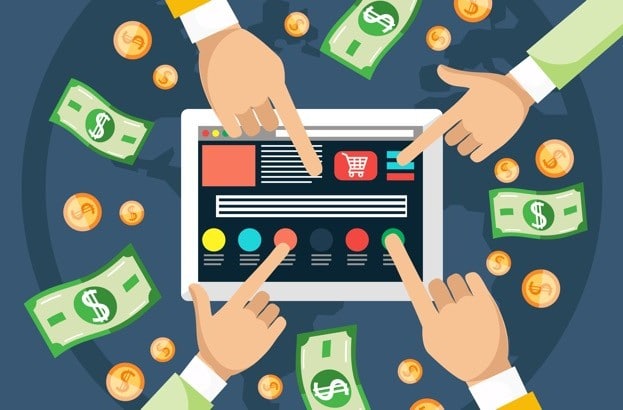Kim Bielak, Marketing Manager, Shopkick
It’s 2018 and no secret by now that social listening is a great addition to your market intelligence toolbox. But is your brand really taking advantage of the wealth of information about your consumers that you could be harvesting from this rich digital soil?
As a Marketing Manager responsible for both our social media channels and various market research sources at Shopkick, pouring through insights, feedback and personal stories from our users on social media is one of the most rewarding parts of my job. It never fails to give me a refreshing new perspective on why we do what we do.
So, whether you’re new to social media or just looking for new ways to share the voice of your consumer throughout your organization, here are 4 ways I’ve come to find social media incredibly valuable in finding insights that can translate into real business impact.
- Understand Your Core Audience Demographics & Interests
You have at least 4 communities with platform-provided analytics at your fingertips to understand who your core customer is, and your sample size is generally not insignificant. Not only can you triangulate age, gender, household income, and other demographic information from sources like Facebook and Twitter Analytics with your other customer data sources, you can also find an enormous source of additional color from asking questions such as what your fans’ favorite music, movies, and books are.
One way you can do this is to type queries directly into Facebook Search like “[Musicians] liked by people who like [Brand].” (Not a bad way to source talent or options for your next spokesperson, eh?) Similarly, services like DemographicsPro will analyze your followers on Instagram and can tell you their affinity with other Instagram accounts, media, and even their most-used hashtags.
- Listen and Look for Patterns

You know the saying: you have two ears and one mouth for a reason. Your customers are out there telling you exactly what they like, exactly what they don’t like, and exactly what they want, and you just have to pay attention long enough to notice it!
First, find out where your brand is coming up organically in conversation by doing a search for your brand’s handle, hashtag, or search term. If a consumer has gone as far as to include you in a public post, it often means one of two things: they absolutely love you, or they absolutely hate you. Be prepared for and really listen to both. While the former is often hard to hear, don’t be too quick to brush it off as whiney behavior. Complaints are often one of your most valuable sources of data, providing clues as to why you’re losing sales, or previously loyal customers. Even if you believe your brand is in the right, remember, your positioning is always in the eye of the consumer, and if you’re seeing a certain perception over and over, you know where you have work to do.
Then there’s the brand love (the best part!). These are your advocates. Are there patterns, or common and relatable things many of your customers have experienced you can source insights from? At Shopkick, we see people talk about using the app to get their steps in as they walk around the mall, going on Shopkick dates with their significant others, or even using the app as a game with the kids to keep them manageable in the store. These are all insights about the unique way people are using our app we didn’t even have to ask for, and have been repeated time and time again. We’ve even been able to mine Facebook comments about some of the brands we work with and have found second uses for products like cat litter and yogurt containers!
From there you can then do the same types of searches for your prospects, competitors, and the larger cultural conversation. If you’re looking to launch a new product, go into a new vertical, or pursue a new target audience, see how consumers are already talking about it. A yogurt brand might search terms like “Greek yogurt,” #Whole30, or even just #breakfast to see what consumers think is significant enough to share. And pay attention to trending topics on Twitter and Google trends, as they are often the first places the next big thing pops up before your insights team has had a chance to do a focus group about it.
Finally, I venture as far as to suggest following your customers and your target audience. Don’t be creepy about it, but within reason, many people get excited when their favorite brands follow them back! This is one of your purest forms of ethnography, as you have a chance to see your customers in their everyday environments. Notice what they include in their profiles, the photos they share, and the moments they find significant. This is truly one of the greatest ways to put a face to your consumer and foster a sense of empathy with their hopes, challenges, and ultimate business needs.
- Ask Them!
I’m not suggesting you ask for your fans’ household income and divorcée status on Facebook, but do ask engaging questions as a great way to acquire some qualitative quotes and insights. For example, we ask our users what they’re saving their Shopkick reward points (called kicks) for all the time. It was on Facebook that we discovered the wealth of users saving their kicks for Disney vacations, but were doing so by cashing out for Target gift cards in the app, and then re-buying Disney gift cards in-person at their local Target stores! If we had only looked at our internal gift card redemption data, we would have seen what we already knew: Target was one of our most popular gift cards. Never would we have realized that so many of our users actually wanted us to add the option of a Disney gift card instead. Needless to say once we added it, our users were very pleased.
Another way to translate these insights into more quantitative data is to export your comments and code them. We recently asked our users what else they wanted to earn kicks for and were able to codify over 800 responses to determine the most popular requests. Once we found the offers we didn’t have enough representation for that were in high demand, we were able prioritize outreach to new partners and business development. We also had the great added value of new crowd-funded ideas we may not have previously thought of, such kicks for experiences, video streaming, and, once again, rewarding people for getting their steps in!
- Create a Testing Ground

Finally, testing is one of my favorite uses of social media that often gets overlooked. Say you’re looking to run a major new ad campaign, or exploring a messaging refresh – you have 365 days to experiment with the light version on social media before you commit to your whole investment! At Shopkick, for example, we’re planning a brand campaign where we’ll be delivering a wish in every state across America this year. Not a small program to risk the types of responses we were going to get in. So, while we were still in concepting, we asked users what they’d wish for first on social media. Not only did we get a flood of responses to demonstrate that the campaign definitely resonated, but we also got tons of insights from fans’ wishes to guide the direction of the overarching campaign message itself. You may not be able to A/B test an ad or a new product every day in the real world, but with social media you have the ability to test and iterate on an idea rapidly until you strike something that truly makes an impression with your community.
At the end of the day, social is only one piece of a full market research toolkit, but it’s certainly one with a lot of unbridled potential, and not to mention wildly cost effective. The rise of social media, big data, and other digital intelligence sources should not become a reason to neglect traditional research methods such as focus groups, IDI’s and prospect surveying. However, if you haven’t yet recognized the power of social media, don’t miss an incredible opportunity to bring the voice of the consumer to your organization. It’s a powerful way to continue to inspire and remind your team of the real faces and the real people whose lives your brand touches each and every day.






